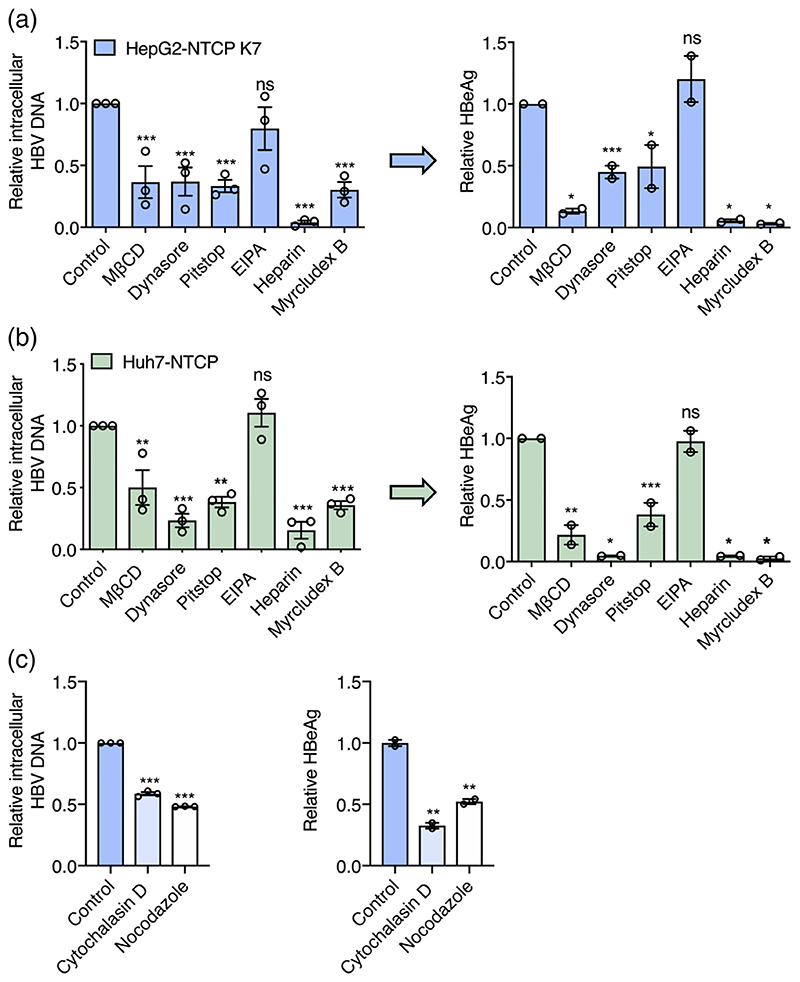Figure 4.
Cellular trafficking pathways exploited by HBV. HBV internalisation is clathrin and dynamin dependent. HepG2-NTCP K7 (a) or Huh7-NTCP (b) cells were treated with pharmacological agents targeting dynamin (Dynasore: 100 μM), Clathrin-mediated endocytosis (Pitstop: 50 μM) or macropinocytosis (EIPA: 100 μM) and inoculated with HBV (MOI 200) as detailed in Figure 1. Cells were pre-treated with Dynasore and Pitstop for 0.5 h prior to infection and during the HBV inoculation step. EIPA was co-treated during HBV inoculation. Trypsin-resistant intracellular HBV DNA copies after 6 h or extracellular HBeAg expression after 5 days was measured. Data are plotted relative to untreated control and represent up to three independent experiments presented as mean ± SEM. (c) HBV internalisation is actin and tubulin dependent. HepG2-NTCP cells were treated with actin and tubulin disrupting agents, Cytochalasin D and Nocodazole (50 μM each) respectively and inoculated with HBV (MOI 200). Trypsin-resistant intracellular HBV DNA after 6 h or extracellular HBeAg levels after 5 days was measured. Data are plotted relative to untreated control and represent up to three independent experiments presented as mean ± SEM. Each experiment consisted of three replicates per condition. Statistical analysis was performed using a Mann-Whitney U test (*p < .05, **p < .01, ***p < .001)

